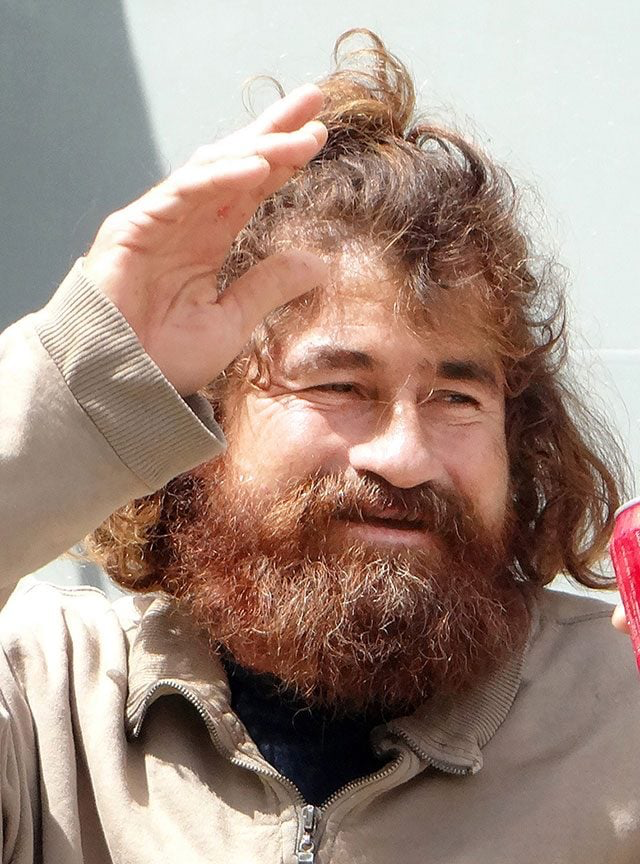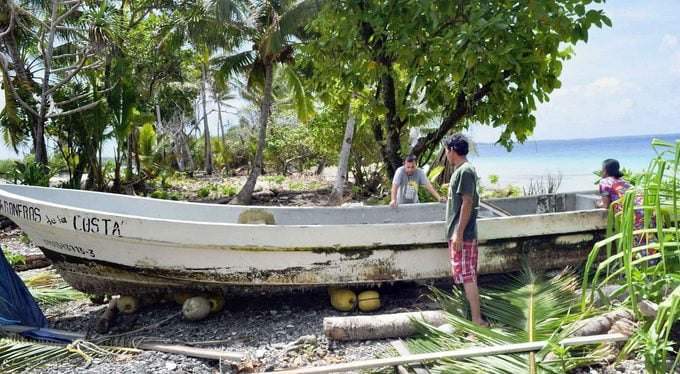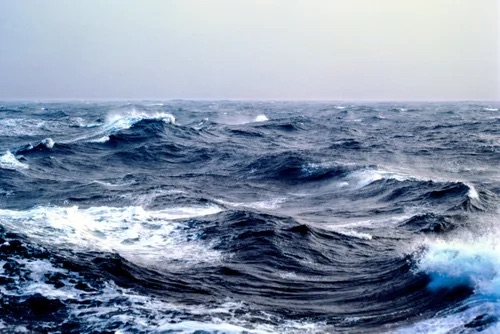A fishing trip turned into a desperate fight for survival for Salvador Alvarenga, who found himself alone at sea.
Alvarenga, a 37-year-old Salvadoran fisherman working in Mexico, loved his simple, no-frills 25-foot fiberglass boat. Without a cabin or roof, it was designed for speed and cutting through waves, powered by an engine mounted at the rear. Known for his heavy drinking and generosity, Alvarenga had no pressing family obligations, as his 13-year-old daughter lived with her mother in El Salvador.
On November 18, 2012, Alvarenga set out from the Pacific coast at 10 a.m. for a fishing expedition, planning to return the following afternoon. His only companion was 22-year-old novice fisherman Ezequiel Córdoba. They packed over 1,000 pounds of gear, including a large icebox for their expected catch of tuna, sharks, and mahimahi. Despite warnings of a coming storm, Alvarenga pressed on, as a single day’s work could provide a week’s earnings.

About 75 miles offshore, Alvarenga cast out a two-mile fishing line. The storm worsened around 1 a.m., tossing the boat violently. Córdoba panicked, urging Alvarenga to return. With waves swelling and the boat filling with water, Alvarenga cut the fishing line to save the boat from being swamped, sacrificing valuable equipment. He then set course for their home port, Chocohuital, six hours away, and radioed their position to his boss, Willie.
By dawn, Alvarenga spotted mountains in the distance, but their situation worsened when the engine died, leaving them stranded 15 miles from the coast. After failed attempts to restart the motor, the cord snapped, and the men were at the mercy of the sea. Alvarenga radioed Willie one last time for help, but soon after, the radio went silent, and strong winds drove them further out to sea.
Five days passed before the winds calmed, leaving them stranded 280 miles offshore. Rescue seemed unlikely, as their low-lying boat was hard to spot from even half a mile away. Córdoba feared they would die, but Alvarenga remained hopeful, urging his companion not to give up. However, without a flare gun or any way to signal for help, their chances seemed slim.

The relentless sun by day and freezing nights took a toll on the men, who huddled in the icebox for warmth. Thirst and hunger consumed them. “I was so hungry I chewed my fingernails,” Alvarenga recalled.
Four days later, rain provided some relief, allowing them to collect five gallons of freshwater, enough to survive for a week on strict rations. They subsisted on small triggerfish, and about 11 days after the motor failed, a turtle bumped into the boat. Alvarenga quickly captured it, knowing they could eat its meat and drink its blood to quench their thirst.
Alvarenga began hunting turtles regularly, but Córdoba struggled to stomach the food, particularly the turtle blood. Alvarenga tried to make the situation more bearable by preparing the turtle meat creatively—slicing it thin, seasoning it with saltwater, and drying it on the outboard motor. He even presented meals on a turtle shell, using fish bones as toothpicks.
Despite the makeshift meals, their hunger led to hallucinations. Córdoba, delirious, began begging for oranges. To calm him, Alvarenga played along, joking that he would check a “store” for fresh supplies. This bit of humor oddly soothed Córdoba, allowing him to sleep.
After months at sea, Salvador Alvarenga established a daily routine. By 5 a.m., he was awake and sitting on deck, filled with joy at the sunrise, knowing that land was somewhere behind him—“that was where my world was.” He checked the fishing traps for any overnight catches, waiting for his companion Ezequiel Córdoba to wake up before sharing their haul. After a nap, they spent much of their day inside the icebox.
Although they started as strangers, Alvarenga and Córdoba developed a friendship. Like young adventurers, they would lie at night, gazing at the stars and creating constellations, trying to outdo one another with imaginative patterns. They even daydreamed that planes flying overhead were there to rescue them. Occasionally, Córdoba sang hymns from the icebox, where the acoustics were better. “I loved listening to him sing,” Alvarenga reminisced.
On what they believed was Christmas Eve, the two prepared a holiday meal together. By this time, Alvarenga had expanded their diet to include seabirds that landed on their boat. Suddenly, Córdoba complained of a stomach ache, and foam began to trickle from his mouth. Investigating the bird Córdoba had partially eaten, they discovered a poisonous snake in its stomach. Although Córdoba recovered, the experience left him traumatized, and he grew fearful of eating raw seabird.
Over the next two months, Córdoba became increasingly emaciated, his arms as thin as twigs and his thighs no thicker than his forearm. He expressed a desire to die at sea rather than starve.
“Goodbye, Chancha,” he said, referring to Alvarenga by his nickname, and attempted to jump overboard.
Alvarenga stopped him, dragging him back and placing him in the icebox, even sitting on the lid to keep him from escaping. Córdoba struggled inside. “Stop thinking about ending your life!” Alvarenga shouted.
Once Córdoba calmed down, Alvarenga joined him in the icebox. “We have to fight,” he urged. “We need to tell our story.”
But Córdoba’s despair deepened. A few days later, he declared, “I am dying.” Alvarenga offered him fresh water, but he refused to drink.
“Don’t leave me alone!” Alvarenga pleaded.
Shortly after, Córdoba passed away. “I propped him on the bench to keep him out of the water,” Alvarenga said.
The next morning, Alvarenga confronted Córdoba’s lifeless body. “How do you feel? How was your sleep?” he asked, pretending to have a conversation with his deceased friend.
“I slept well. Did you have breakfast?” he imagined Córdoba would respond.
“Yes, I already ate.”
“Me too. I dined in the Kingdom of Heaven.”
To cope with his loss, Alvarenga pretended that Córdoba was still alive. “How is death? Is it painful?” he asked.
“Death is beautiful. I’m waiting for you,” he imagined Córdoba replying.
“I don’t want to go,” Alvarenga responded. “I’m not going that way.”
Six days after Córdoba’s death, Alvarenga let his friend drift into the sea. Alone now, he focused on distractions like hunting and fantasizing about being rescued. To change his environment, he created a shark-detection system, tossing birds’ feet into the water. If no sharks appeared, he would take short, nerve-wracking swims. “I pretended I was at the beach with friends,” he said. “Getting off the boat helped me relax.”
He increasingly thought about his estranged daughter, Fatima, who was 14 at the time. “I thought of her all day. Dreaming she yelled, ‘Papi!’ made me happy.”
Alvarenga envisioned his life if he returned home, picturing himself as a family man with many children and livestock. He prayed for a chance to reconcile with Fatima.
One day, a ship appeared on the horizon, approaching rapidly. It came so close that Alvarenga feared it would collide with his boat. As it passed just 50 yards away, he yelled, “Help! Here!” but the crew didn’t respond and continued on their way.
“Do you think I’m on a day trip?” Alvarenga shouted, but the near miss left him devastated. His mental state worsened, and he became lethargic, mirroring Córdoba’s earlier decline.
In 11 months, Alvarenga drifted 5,000 miles, averaging less than a mile an hour. He was in tattered clothes, with only a sweatshirt belonging to Córdoba for sun protection. From the waist down, he wore only worn underwear and a shoe he had found in the sea, with a wild mane of copper-colored hair and a thick beard.
Alvarenga began to wonder if his ordeal had a deeper purpose. Should he have survived for so long? Was he meant to provide hope to those contemplating suicide? “What’s worse than being alone at sea?” he pondered. “That’s what I’d tell someone thinking about suicide. What suffering compares to this?”
On January 30, 2014, coconuts floated in the ocean, and the sky was filled with birds. A cold rain blurred visibility as Alvarenga scanned the horizon from the deck and spotted a tiny tropical island through the mist. The sight of the uninhabited island prompted an urge to swim ashore. Cautious of sharks, he waited until he felt safe. It took him half a day to reach land. Just ten yards from shore, he dove into the water and let a wave carry him in. Lying faced down on the beach, he clutched a handful of sand like it was treasure.
Alvarenga was soon discovered by the island’s only inhabitants. He had reached Ebon Atoll in the Marshall Islands, one of the world’s most remote locations. Had he missed Ebon, he would have drifted 3,000 miles to the Philippines.
After 11 days, Alvarenga’s health had sufficiently improved for him to return to El Salvador. When he reunited with his daughter, Fatima, he embraced her tightly, saying, “I love you,” as tears streamed down his face. Fatima held him even closer. “I know I wasn’t there to raise you, and those years are gone. But I’m here now to guide you and help you learn right from wrong.”
Alvarenga had completed one of the most remarkable journeys in maritime history. He drifted without navigating, sailing, rowing, or paddling. Unable to steer his course, he had to forge a means of survival on his own. He experienced both extreme misfortune and incredible luck.
Now, he was finally back home.
